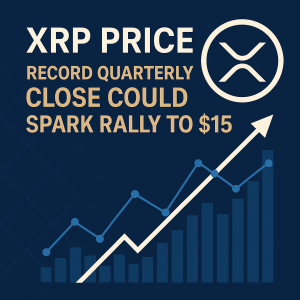The landscape of the cryptocurrency market is experiencing a significant transformation, with Wall Street institutions increasingly taking the lead in driving the latest boom.
Historically, the crypto space was heavily influenced by individual retail investors and the so-called ‘Crypto Bros.’ who popularized Bitcoin and other digital assets through social media and online communities. However, recent trends indicate a shift where large institutional investors and Wall Street firms are now the primary catalysts behind the market’s current upward momentum.
Major financial institutions, hedge funds, and investment banks have begun allocating substantial capital into cryptocurrencies, viewing them as a strategic asset class for diversification and high returns. This institutional interest has been reflected in the rise of crypto-related products, such as futures, ETFs, and derivatives, which are now more mainstream in traditional finance environments.
This shift is supported by the increased adoption of cryptocurrencies by established financial players, including Goldman Sachs, Morgan Stanley, and BlackRock, which have launched or announced plans for crypto trading desks and investment vehicles. Their involvement not only boosts market confidence but also introduces a new level of legitimacy and stability to digital assets.
The implications of Wall Street’s involvement are far-reaching. Retail investors, who previously dominated the narrative, may find their influence waning as institutional investors bring more capital and stability but also more regulatory scrutiny. This could lead to increased price stability but might also introduce new risks associated with institutional strategies and market manipulation concerns.
Market analysts are watching closely how this institutional shift impacts crypto prices and volatility. Some experts suggest that the entry of Wall Street could lead to a more mature and sustainable market, reducing extreme swings that characterized earlier phases of the crypto boom. Others warn of potential overexposure or regulatory crackdowns as authorities seek to oversee these new market dynamics.
Next, investors should keep an eye on upcoming regulatory developments, especially as governments around the world consider new frameworks for crypto trading and taxation. Additionally, the performance of major institutional-backed crypto funds and ETFs will serve as key indicators of the market’s direction. Lastly, the upcoming quarterly earnings reports from firms heavily involved in crypto could provide insight into how well this trend sustains itself.
What are the key factors driving Wall Street’s increased interest in crypto?
Institutional investors see cryptocurrencies as a high-growth asset class offering diversification benefits, which has led to increased allocations to digital assets.
How might regulation affect the future of crypto investments?
Stronger regulation could provide more legitimacy and stability but might also impose restrictions that could limit market growth or introduce new risks.
What should retail investors consider in this new institutional-led crypto environment?
Retail investors should be aware of the increased influence of large financial firms and the potential for market manipulation or regulatory changes that could impact asset prices.







